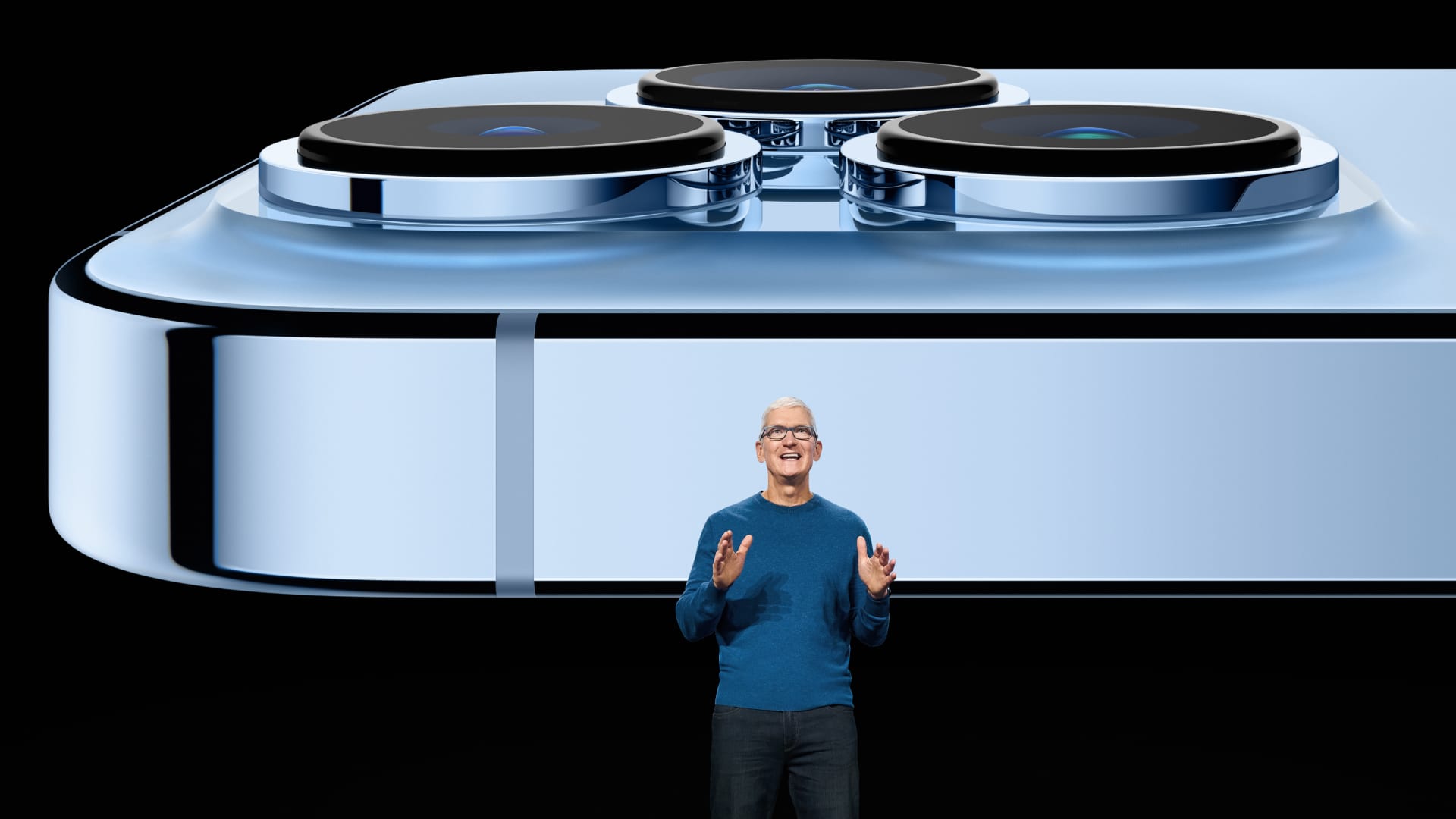For industrial cobots, the hype got ahead of the technology, but the future is coming fast


In this weekly series, CNBC takes a look at companies that made the inaugural Disruptor 50 list, 10 years later.
One of the enduring lessons of the iPhone era is that Steve Jobs led with what the consumer didn’t know they wanted until he showed it to them. Robotics pioneer Rodney Brooks has operated from a similar idea — with varying degrees of success.
His robot vacuum cleaner Roomba, and its parent company iRobot, which more or less made the category of robotic vacuums an inexpensive, must-have for many consumers, was recently sold to Amazon for $1.7 billion.
“iRobot found a product-market fit. It had a feature set and a cost that lots and lots of people were willing to pay for, that puck-shaped thing that cleans the floor pretty well,” said Matt Beane, an assistant professor in the technology management program at the University of California, Santa Barbara, and a robotics expert.
But another of Brooks’ big, early ideas, hasn’t worked out the way he or the world imagined.
Rethink Robotics was founded in 2008 with the idea that a cobot — a robot working alongside humans in ways that traditional automation couldn’t (i.e. with much less danger to the human), and without the fencing that most industrial robots remained inside — was a market waiting to be made among industrial customers. But for all the novel ideas that Brooks and his Rethink colleagues brought to the table, its first cobot never caught on.
It caught on in the press, for sure, and if you were following tech news at the beginning of the last decade you likely saw Baxter and “his eyes” staring out from the screen between his arms at some point in a photo or video footage. At CNBC, we learned firsthand the limitations of working with novel industrial robots when we invited Baxter on-air for a live segment as part of Rethink being named to the inaugural Disruptor 50 list in 2013. For technical reasons, it would have been a lot more difficult than we imagined to get Baxter onto the television studio set.
While he may not be a part of the robotic future anymore, there is no history of the cobot that can be written without Baxter.
“There is no such thing as the cobot without Rod Brooks,” Beane said. “Rethink started the industry.”
After a lot of early fanfare, reality set in for Rethink. By 2018, it was struggling to scale its operations and find enough buyers for Baxter, with its two-armed design proving to be a novel idea, but a mistake. “No one needs a two-armed robot,” Beane said, describing that design decision as “humans projecting onto a robot their own physical form.”
Rethink pivoted, in what turned out to be a move made too late, to a one-armed robot named Sawyer. But the technology had other problems.
Rethink bet on an approach that used elastic actuators — a technology one of Brooks co-founders was an expert on — which allowed the robot to perform “force sensing,” an approach the company backed because it would make the robots safer around human coworkers. Rethink’s design would also make the robots low cost, getting rid of standard industry reliance on motors and related parts.
Paul Maeder, a mechanical engineer who invested early in Rethink through his VC firm, told the American Society of Mechanical Engineers in a post-mortem on Rethink that goes deep into the technical shortcomings, that cheaper parts plus force sensing seemed like the way to bring down pricing in the robotics market and appeal to customers.
And it did bring down pricing.
“The reality is that they had a very low price point, shockingly low,” Beane said. “They had done an amazingly good job at materials sourcing and design, and they were headed to one-third or one-quarter of the price for other robots.”
But Rethink never achieved the market penetration or scale it needed to maintain its operations. As the financials worsened, Rethink became the acquisition target of a Chinese firm, a deal Beane says would have had a good shot at getting the firm to scale. But that deal was scuttled “at the last moment,” according to the company, and a 2018 bankruptcy followed. Rethink was bought out of bankruptcy by German automation company Hahn Group, which is still trying to make the technology a success today.
In a statement provided to TechCrunch at the time of its demise, Rethink said, “We were early to market with a very innovative product that was ahead of its time, and unfortunately, we did not achieve the commercial success we had expected.”
It’s true Rethink had no shortage of interesting, innovative ideas, even if they weren’t the right ones for the market.
According to Beane, one of the most intriguing was the ability for the cobot to be programmed by the worker. “People don’t make much of this feature anymore, but that was a graphic user interface system which didn’t require code and you could teach it, train it to do a job as the worker,” Beane said. “But no manager would turn those features on,” he added.
That’s an idea that Brooks is still working on today, through his latest robotics startup Robust.ai, co-founded with cognitive scientist Gary Marcus, which is making a warehouse cobot, Carter, that is like a mobile shopping cart providing transport within fulfillment centers. “It can drive in any direction and is worker programmable and can physically collaborate,” Beane said. “A lot of the same DNA is there.”
Once Sawyer became the lead cobot, Rethink invested in a technology that integrated the cobot with preexisting industrial automation, an interesting approach, but ultimately, another bottleneck that was costly in engineering time to connect and to get to communicate with machinery like conveyors. “Just to alter the speed of a conveyor is extremely expensive,” Beane said.
The DNA that has become standard in the cobot market that Baxter, and later Sawyer, hoped to dominate, is from Rethink rival and Denmark-based Universal Robots. While its cobots may be “very boring looking” in Beane’s view, they were what the market ultimately wanted.
“In the end, the series elastic actuators were probably not the best idea in the world,” Maeder told ASME. “What customers really want is a low-cost, simple, fast, repeatable robot. They want to put something in this exact location again, and again and again. In the end, that was a lot more complicated for us to achieve than for some of our competitors because they weren’t trying to do force sensing.”
Even the two arms that Baxter had could always be purchased by a buyer if they really wanted that approach, by purchasing two single-arm robots, and that’s what Universal Robots — which was acquired by industrial automation company Teradyne in 2015 — excels at, with its UR3, UR5 and UR7 cobots leading to increased sales, and successive generations of its cobot line continuing to hit the market.
The opportunity for robotics technology remains significant, though it is still trailing other automation approaches in market penetration. Robot sales in the North American market have been growing, and the Teradyne unit led by Universal Robots is seeing steady, if not explosive, sales growth, too. Revenue was $300 million in 2019, and then increased to $376 million last year after a Covid dip. According to Wall Street estimates, sales could reach $440 million this year, or about 18% growth. That growth rate is higher than the percentage of overall revenue it represents, which is still under 15%.
“A lot more will occur,” Beane said. “Progress often looks slow up close … but the utility of a robotic system that can accomplish general tasks at a reasonable cost is extraordinary, billions, maybe trillions worth of value,” he added.
And costs keep going down, from batteries to sensors and software, meaning the price performance for robots keeps going up steadily. But where the cobot finds its greatest utility remains an open question. While the industrial world use has been in the first decades often as much a marketing ploy or, at best, an experiment rather than proof of widespread adoption, there is reason to forecast multiple roles for cobots based on an aging demographic.
“Anyone who says not in my lifetime, you better hope it is in your lifetime, because you will need help,” Beane said.
He anticipates that jobs outside of the manufacturing sector with which cobots have been associated — from warehousing to retail, medical (think cobots bringing supplies to nurses) and retirement communities — are areas poised for growing use. “Manufacturing is about high throughput and high consistency and you can automate the heck out of it without a cobot,” Beane said. “We’re only just getting started on this capability being useful and used at scale.”
Rodney Brooks is among the robotics experts who has spoken about a world that is getting older and a working population that is not as strong. He wrote in a blog post covering his annual predictions that “soon the houses of the elderly will be cluttered with too many robots.”
Wall Street analysts are focused on the opportunity presented by a chronic labor shortage, and related changes taking place in a global outsourcing paradigm which economies including the U.S. have been relying on for decades. With “near shoring” and onshoring of more manufacturing activity, there is increasing demand for labor in a tight labor market. One answer is automation, and technology like Universal Robots is relatively easy to program and implement.
But one big issue the cobots have not yet solved is the same one that started Brooks down the Rethink path: figuring out what everyone wants from this technology, the “killer app,” so to speak, for the cobot. Universal Robots has many different applications for its technology, but not a single one that drives strong demand within one very high volume market. That’s a solvable problem, but still a work in progress. Robots running popcorn stations in a movie theatre or robot cafe baristas aren’t the career opportunity that takes the cobots to center stage in the economy. But there is a shortage of people and automation has to be one of the solutions, even if it doesn’t happen by tomorrow.
We have not reached a world of genuine physical collaboration between human worker and cobot, Beane says, “the kind of stuff where humans reach over to grab the next thing and the robot sees I am reaching and hands it to me and we might even brush up against each other,” but, “We are getting there,” he added.
The automated systems that are most widely deployed remain the ones that are more dangerous and kept at a distance.
But Beane thinks that Rethink came closer to solving the problem than it is given credit for, and has yet to prove in its new life under Hahn. Hahn did not respond to a request for comment by press time.
“Another eight months and maybe they might have gotten product-market fit. It was inexpensive and reliable. I really do believe we could have seen an iPhone moment,” Beane said.
In his personal blog, Brooks summed up the Rethink story this way: “Baxter and Sawyer were the first safe robots that did not require a cage to keep humans away from them for the humans’ protection. And Sawyer was the first modern industrial robot which finally got away from having a computer-like language to control it, as all robots had since the idea was first developed at the Stanford AI Lab back in the very early seventies. There is still a lot remaining to be done.”
Sign up for our weekly, original newsletter that goes beyond the annual Disruptor 50 list, offering a closer look at list-making companies and their innovative founders.
This post has been syndicated from a third-party source. View the original article here.




